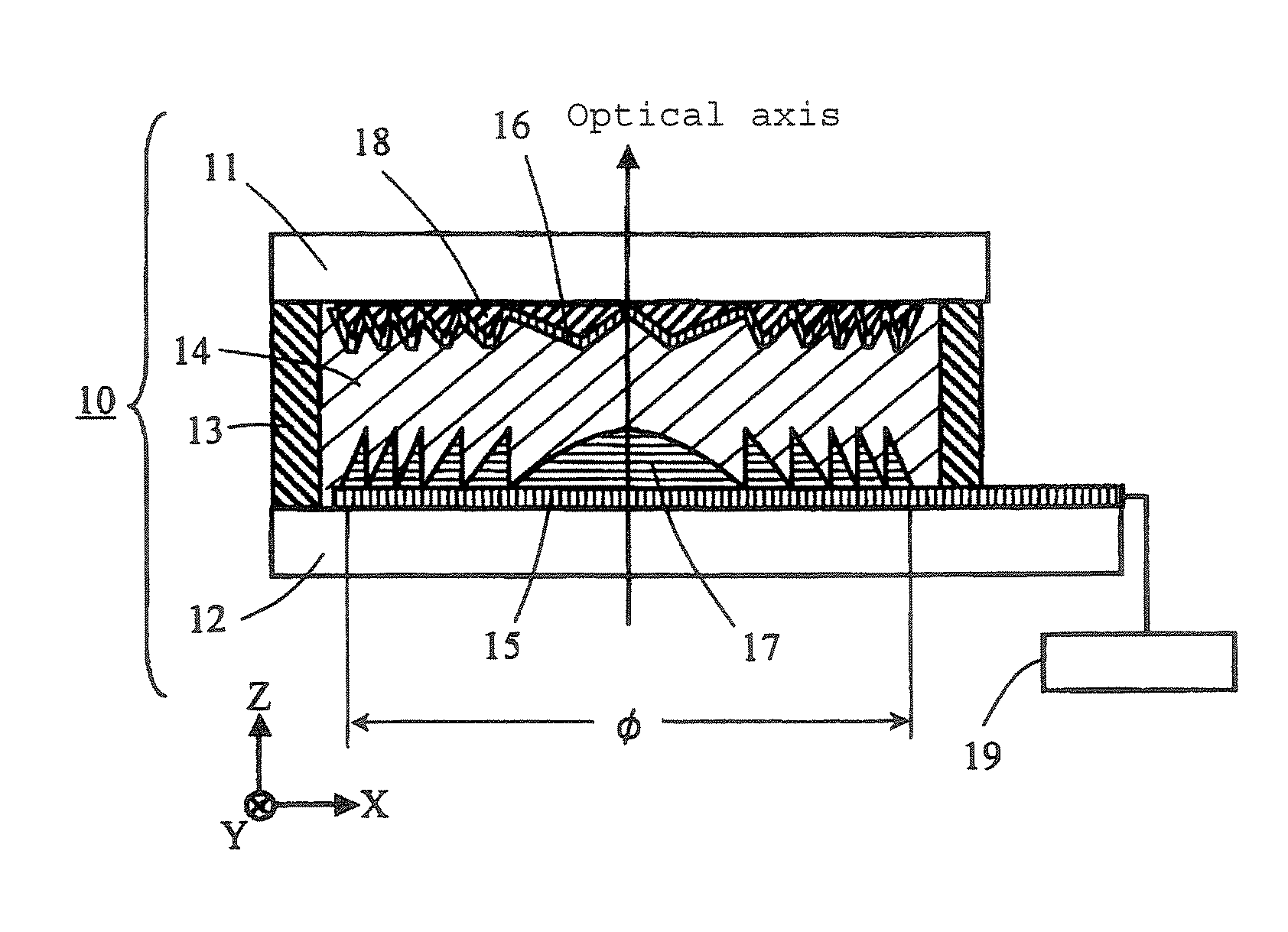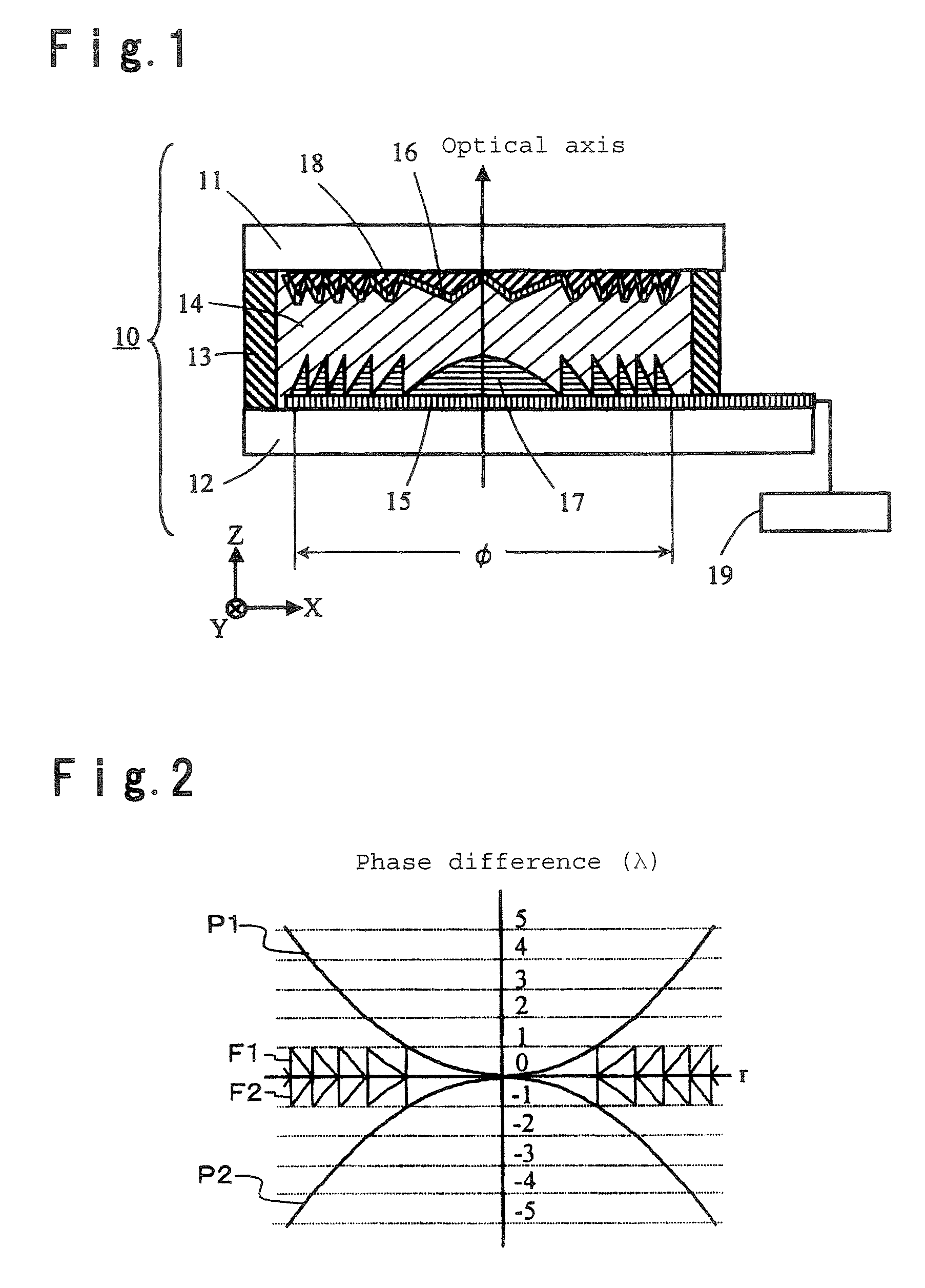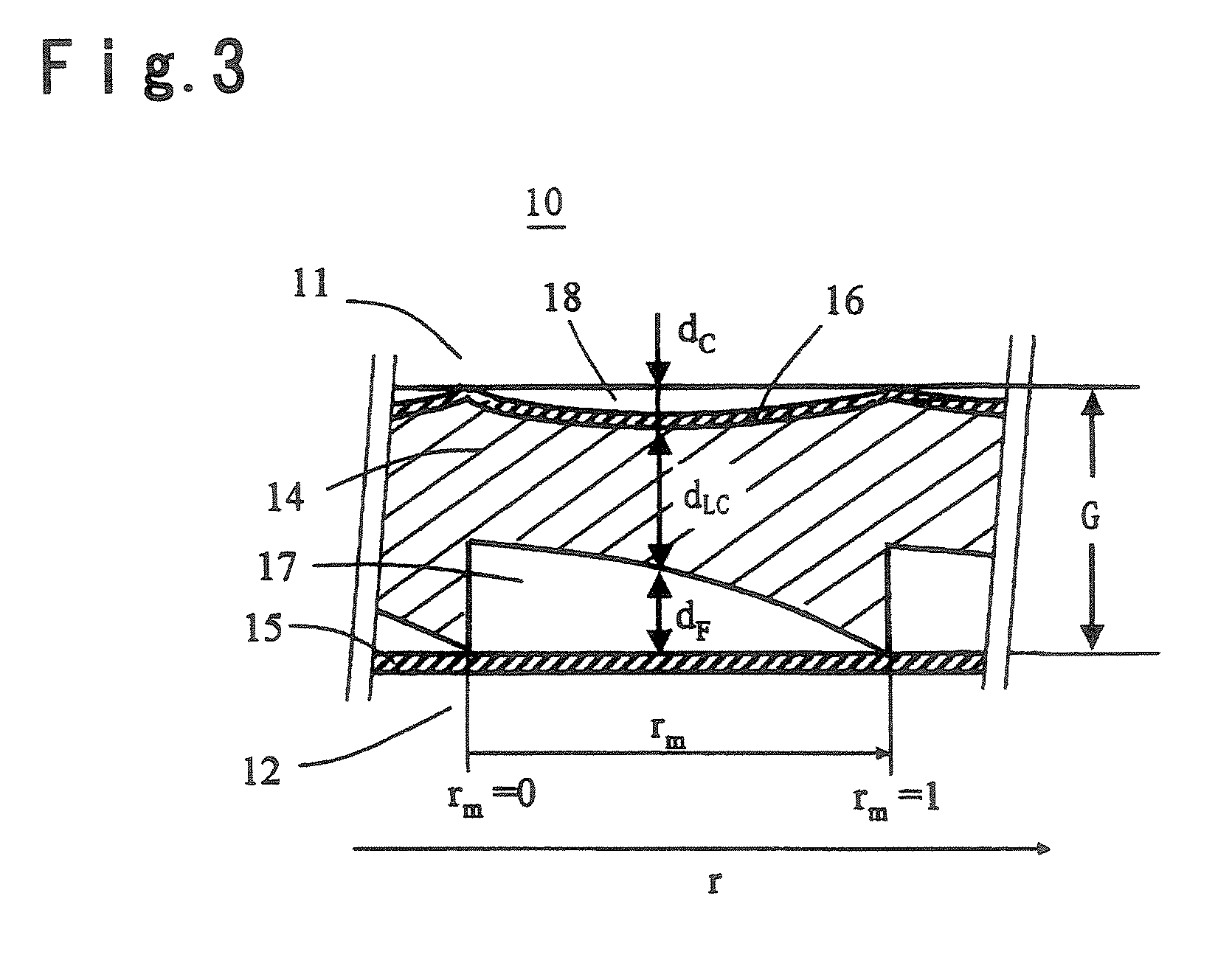Liquid crystal lens element and optical head device
a liquid crystal lens and optical head technology, applied in the field of liquid crystal lens elements and optical head devices, can solve the problems of increasing the size of the optical head device b>100/b>, writing error, writing error, etc., and achieves the effects of reducing the thickness of the liquid crystal layer, low voltage drive, and high speed respons
- Summary
- Abstract
- Description
- Claims
- Application Information
AI Technical Summary
Benefits of technology
Problems solved by technology
Method used
Image
Examples
first embodiment
[0066]FIG. 1 is a cross-sectional view showing a first embodiment of a liquid crystal lens element of the present invention, in which a liquid crystal lens element according to this embodiment has a liquid crystal layer 14 sandwiched by transparent substrates 11 and 12 and a seal 13. On a surface of the first transparent substrate 12, a transparent electrode 15 and a Fresnel lens surface 17 are formed, and on a surface of the second transparent substrate 11, a phase correction surface 18 and a transparent electrode 16 are formed. The transparent electrodes 15 and 16 are connected with an external signal source 19 to apply a voltage to the liquid crystal layer 14. Although not shown in FIG. 1, on surfaces of the transparent electrode 16 and the Fresnel lens surface 17, alignment films for aligning the liquid crystal layer 14 are formed. Further, an antireflective film may be formed on outer surfaces of the transparent substrates 11 and 12.
[0067]Then, an example of production process ...
second embodiment
[0101]Then, an example of the construction of the liquid crystal lens element according to a second embodiment of the present invention is described as follows.
[0102]FIG. 5 is a cross-sectional view showing a liquid crystal lens element according to the second embodiment of the present invention. A liquid crystal lens element according to this embodiment has a liquid crystal layer 24 sandwiched by transparent substrates 21 and 22 and a seal 23. Among these, on a surface of the first transparent substrate 22, a transparent electrode 25 is formed. On the other hand, on a surface of the second transparent substrate 21, a phase correction surface 28, a transparent electrode 26 and a Fresnel lens surface 27 are formed in this order. The transparent electrodes 25 and 26 are connected with an external signal source 19 to apply a voltage to the liquid crystal layer 24. Here, although not shown in FIG. 5, on surfaces of the transparent electrode 25 and the Fresnel lens surface 27, alignment ...
third embodiment
[0110]Then, an optical head device employing the liquid crystal lens element of the present invention is described as follows.
[0111]FIG. 6 is a schematic view showing an example of an optical head device 30 employing the liquid crystal lens element of the present invention. The optical head device 30 is configured to write and / or read an information to / from a double layer optical disk D, and has a laser diode 31 as a light source, a polarizing beam splitter 32, a collimator lens 33, the liquid crystal lens element 10 (20) of the present invention, a quarter waveplate 35, an objective lens 36, a cylindrical lens 37 and a photodetector 38. Meanwhile, as the double layer optical disk D, e.g. a DVD or a high density optical disk is employed, which has a first recording layer D1 and a second recording layer D2.
[0112]The laser diode 31 may be a laser diode of any one of 780 nm band, 660 nm band and 405 nm band in terms of wavelength to use according to the type of optical disk D, or a plu...
PUM
| Property | Measurement | Unit |
|---|---|---|
| wavelength band | aaaaa | aaaaa |
| thick | aaaaa | aaaaa |
| thickness | aaaaa | aaaaa |
Abstract
Description
Claims
Application Information
 Login to View More
Login to View More - R&D
- Intellectual Property
- Life Sciences
- Materials
- Tech Scout
- Unparalleled Data Quality
- Higher Quality Content
- 60% Fewer Hallucinations
Browse by: Latest US Patents, China's latest patents, Technical Efficacy Thesaurus, Application Domain, Technology Topic, Popular Technical Reports.
© 2025 PatSnap. All rights reserved.Legal|Privacy policy|Modern Slavery Act Transparency Statement|Sitemap|About US| Contact US: help@patsnap.com



